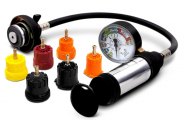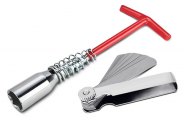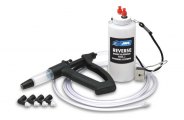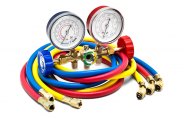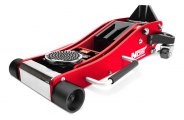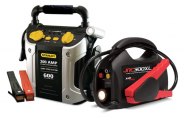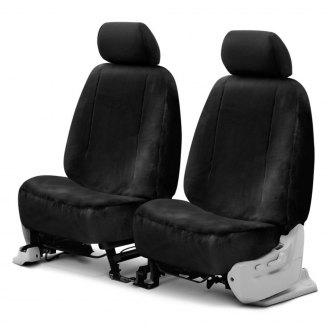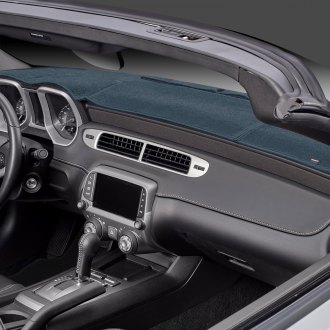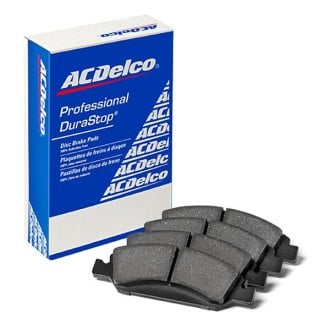Jensen Accessories & Parts

Jensen Parts
Universal Wheels & Tires
Jensen Exterior Accessories
Jensen Automotive Lighting
Jensen Body Parts
Jensen Interior Accessories
Universal Audio & Electronics
 Installation Parts
Installation Parts Stereos
Stereos Speakers
Speakers Amplifiers
Amplifiers Subwoofers
Subwoofers Cameras & Driver Safety
Cameras & Driver Safety Alarms & Remote Start
Alarms & Remote Start CB Radios & Components
CB Radios & Components Antennas & Components
Antennas & Components iPhone & Android Integration
iPhone & Android Integration Bluetooth
Bluetooth Equalizers & Processors
Equalizers & Processors Batteries & Power
Batteries & Power Video
Video Radar Detectors
Radar Detectors GPS Systems
GPS Systems Mounts & Chargers
Mounts & Chargers Action Cameras & Accessories
Action Cameras & Accessories
Jensen Automotive Tools
 Oil Change Tools
Oil Change Tools Cooling System Service Tools
Cooling System Service Tools Spark Plug & Ignition Tools
Spark Plug & Ignition Tools Wheel & Tire Service Tools
Wheel & Tire Service Tools Engine Service Tools
Engine Service Tools Brake Service Tools
Brake Service Tools Suspension & Steering Service Tools
Suspension & Steering Service Tools Fuel System Service
Fuel System Service Transmission & Drivetrain Service Tools
Transmission & Drivetrain Service Tools Pullers & Installers
Pullers & Installers A/C Tools & Equipment
A/C Tools & Equipment Electrical System Tools
Electrical System Tools Diagnostic & Testing Tools
Diagnostic & Testing Tools Exhaust System Service Tools
Exhaust System Service Tools Auto Glass Tools
Auto Glass Tools Lockout Kits
Lockout Kits Jacks
Jacks Automotive Lifts & Stands
Automotive Lifts & Stands Repair Manuals
Repair Manuals Automotive Paint
Automotive Paint EV Charging
EV Charging Battery Chargers & Jump Starters
Battery Chargers & Jump Starters Dollies & Movers
Dollies & Movers Creepers
Creepers Auto Detailing
Auto Detailing Key Cutting Machines
Key Cutting Machines Dent Repair Tools
Dent Repair Tools Service Carts
Service Carts Vehicle & Parts Protection
Vehicle & Parts Protection
The craft of coach building is a centuries old practice, with its roots in the days when skilled artisans created ornate horse-drawn carriages for the aristocracy. Many early auto makers began as coach builders, and the practice of making custom bodies for automobiles was prevalent during the first half of the last century. The Jensen brothers, Alan and Richard, started out as coach builders in the 1920s, and through the years created custom bodies for the chassis of many prominent British manufacturers including Austin, Morris, Singer, Standard, and Wolseley. Jensen also built commercial vehicles but it is the sports cars of their own design, especially the Interceptor and Jensen-Healey, for which they are best known.
The Jensen brothers first gained industry attention when they built a sporty boat-tailed body for the popular Austin 7. They went to work designing cars and bodies for several companies, but it was not until the early 1930s when they were at body maker W J Smith & Sons that their name appeared on a vehicle: the Jensen Wolseley Hornet. When W J Smith died in 1934, the brothers bought controlling interest in the firm and renamed it Jensen Motors Limited. They went on to build custom bodies for many of the era’s most well-known manufacturers and even designed and built a car on a Ford V8 chassis for actor and car enthusiast Clark Gable. They received many accolades for this car and it led to a whole series of cars with Jensen bodies built on Ford chassis, culminating in the first production Jensen sports car, the Jensen S-type. The S-type, available in both a saloon (sedan) and convertible body, was manufactured from 1936 to 1941 and featured aluminum body panels on a Ford chassis with Ford flathead V8 engine.
In the late 1930s Jensen branched out and entered the commercial vehicle business, manufacturing lightweight trucks that were sold under the name JNSN. During World War II the company produced components for tanks and other military vehicles. The commercial business continued to expand after the war with the production of delivery vans and buses in addition to trucks. Still very much the coach builders, Jensen also built steel bodies for BMC (British Motor Corporation) for the Austin Gipsy, a 4WD vehicle produced from 1958 to 1968 that was designed to compete with the Land Rover.
Although coach building was still the company’s main business, after the war Jensen wanted to continue building sports cars. The first generation Interceptor, manufactured from 1950 to 1957 with an aluminum body on an Austin 70 chassis, was the first of several creations from designer Eric Neale, who had joined the firm in 1946. Neale also designed the aluminum bodies that Jensen produced for the Austin A40 Sports, which was produced from 1951 through 1953. Along with A40 Sports bodies, Austin also contracted with Jensen to make the bodies for the Austin-Healey 100. Like many other companies at the time, in the early 1950s Jensen began experimenting with fiberglass bodies, and this material was chosen for what was perhaps Neale’s greatest design, the Jensen 541, so named because it was the first car built in 1954. The fast and luxurious 541 was powered by a 4 liter Austin 6-cylinder engine that propelled the sleek grand tourer to a top speed of 115 mph. The 541R, which soon followed, added 4-wheel disc brakes, dual exhaust and overdrive. A subsequent 541S was equipped with a GM Hydramatic automatic transmission.
In 1959 Jensen was purchased by Norcros Limited. Alan and Richard Jensen remained on the board of directors for several years until, disagreeing with the direction in which the company was headed, they resigned in 1966. By the early 1960s the demand for higher performance led the company to shelve the Austin 6-cylinder and instead fit a 361 c.i. Chrysler V8 under the hood of the C-V8, the successor to the 541 and yet another Neale design. The lightweight fiberglass body and large, powerful engine combined to make the C-V8 one of the fastest 4-seaters available at the time, and the car gained even more speed when the larger 330 hp 383 c.i. Chrysler V8 was installed in 1964. The front of the C-V8 featured 2 diagonally stacked headlights on each side that were originally intended by Neale to be housed under streamlined covers, similar to those on the original E-type Jaguar. However, at the last minute the covers were deleted from the design, with unfortunate consequences for the vehicle’s appearance.
For the successor to the C-V8, Jensen’s new management wanted a fresh design and turned to Italy’s Carrozeria Touring to craft the shape of the all new Interceptor. The new car had a steel body shell with sharply defined lines, a long hood and a large curved rear glass that was also a hatch. The car was also available as a coupe and a convertible. The Interceptor MkI debuted in 1966 with basically the same running gear as the C-V8. The MkII followed in 1969 with slightly revised styling. Styling was again revised in 1971 with the MkIII, but the big news was the introduction of the 440 c.i. Chrysler V8. This engine was available in 1971 only with 3 two-barrel carburetors and made 330 net hp, making this model Jensen the most powerful ever offered.
At the same time that plans for the Interceptor were being developed, Jensen was also working a on a car that would be mechanically revolutionary – the Jensen FF. FF stood for Ferguson Formula, a four-wheel drive system for cars that had been developed by tractor manufacturer Harry Ferguson. The system was first installed on a modified C-V8, along with a Dunlop developed anti-lock braking system that had been originally designed for aircraft. The C-V8 version of the FF was used as a test bed only, and the FF went into production in 1966 with a body using similar sheet metal to the Interceptor. The FF was the first road-going production car with 4WD and ABS, but it was very expensive, about 30% higher priced than the Interceptor, and only produced with right-hand drive, which limited its marketability. It was discontinued in 1971 after only 320 had been produced.
In the late 1960s Jensen was building bodies for both the Austin-Healey 3000 and Sunbeam Tiger. When the parent companies of those cars decided to end production, Jensen management made the decision to cease coach building and concentrate on car manufacturing. But the production volume of Interceptors and FFs was not enough to keep the company going. The company was sold again and new management appointed renowned racing driver and car designer Donald Healey as company chairman. Healey had been keen on creating a replacement for the Austin-Healey 3000, and since Jensen had built the bodies for all of the Austin-Healeys, he already had a relationship with the company, so this was the perfect opportunity to create the successor to the 3000.
The resulting Jensen-Healey that debuted in 1972 was styled by Hugo Poole with later modifications by William Towns to facilitate the fitting of U.S. spec bumpers. It was powered by a 2 liter, 144 hp Lotus DOHC 16-valve aluminum 4-cylinder engine, backed initially by a Chrysler 4-speed, and later a Getrag 5-speed transmission, that together propelled the car from 0-60 mph in 7.8 seconds and a 119 mph top speed. The car featured front disc and rear drum brakes, coil springs all around, with a live axle in back and double wishbones up front. The lightweight aluminum engine gave the Jensen-Healey 50/50 weight distribution and the car was lauded for its handling. A factory team of Jensen-Healeys won the SCCA (Sports Car Club of America) D production championships in 1973 and 1974. The 2-door convertible was slotted in the marketplace between the Triumph TR6 and E-type Jaguar, and over 10,000 units were sold, making it the best-selling Jensen of all time. However, the oil crisis of the 1970s were devastating to Jensen, particularly affecting sales of the Interceptor with its big thirsty engine, and the Jensen-Healey was not enough to save the company. A fastback version of the car called the Jensen GT was brought out in 1975, but shortly afterward Jensen went into liquidation, with production of all models ending in 1976.
In the late 1990s an attempt was made to revive the Jensen marque. The S-V8, a 2-seat convertible powered by a Ford 4.6 liter DOHC 32-valve V8 engine was shown at the 1998 British International Motor Show, and production commenced in 2001. However, only 20 cars were completed before the company failed the following year. There are currently reports that another attempt at revival is being made. But you don’t have to hope for a comeback if you’re in the market for a Jensen. Used examples, especially Interceptors and Jensen-Healeys, are readily available on many collector car web sites. If you’re considering a Jensen or you’re lucky enough to own one of these affordable exotics, we’ve got the maintenance supplies, repair parts and appearance products you need to keep your British classic in great shape.
Dress your vehicle up. Keep it running at its peak or unleash its hidden power. Make it look like it just rolled off the show room floor. Take care of it and maintain it. You name it, we've got it. We have gathered everything you need to make your Jensen perfect both inside and out. CARiD's job is to meet your every expectation and provide you with quality and durable accessories and parts designed with excellence in mind. Whether you're after luxurious style, brisk performance, or anything in between, our wide assortment covers all the bases.
